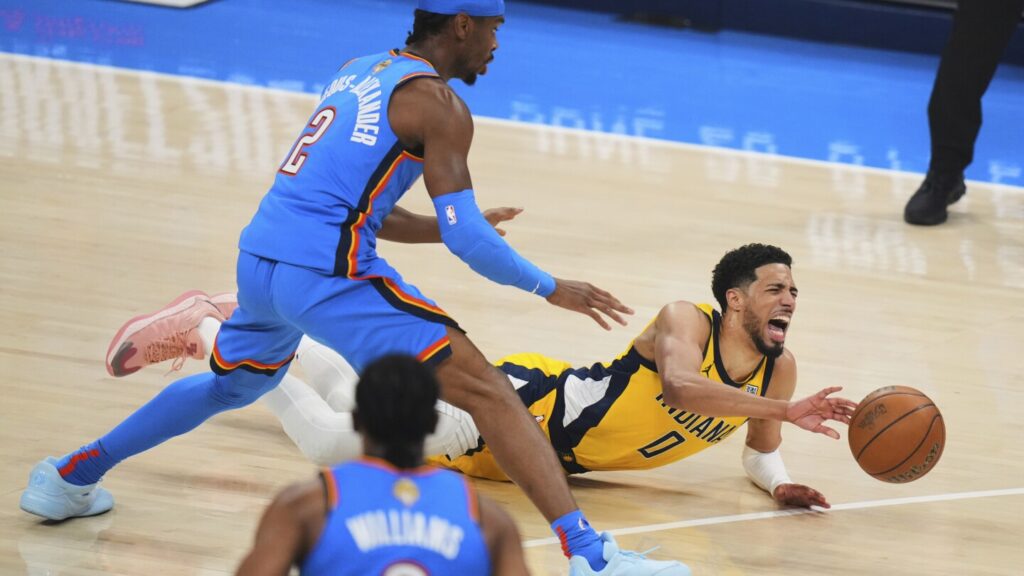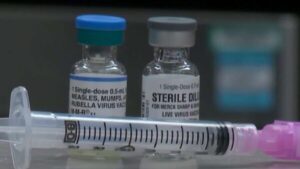
INDIANAPOLIS (AP) — In a dramatic turn of events, NBA stars Kevin Durant and Tyrese Haliburton both exited their respective NBA Finals elimination games with torn right Achilles tendons after entering the matches with strained right calves. This unfortunate pattern highlights a worrying trend in professional basketball: the increasing frequency of Achilles injuries among younger players.
Durant, a perennial All-Star and the 2014 NBA MVP, faced a year-long recovery following his injury. Now, Haliburton, the Indiana Pacers’ two-time All-Star, might be looking at a similar timeline. Both athletes were aware of the risks involved in playing through their injuries, yet chose to pursue their championship dreams, ultimately paying the price on basketball’s grandest stage.
The Rising Trend of Achilles Injuries
Haliburton’s injury is not an isolated case. It marks a broader trend where younger athletes are increasingly susceptible to Achilles injuries, a condition once more common among players in their late 30s and early 40s. Alongside Haliburton, Boston Celtics’ Jayson Tatum and Milwaukee Bucks’ Damian Lillard also suffered similar injuries during the playoffs, with each expected to miss most, if not all, of the upcoming season.
Experts like Dr. Kevin Farmer, an orthopedic surgeon and chief of sports medicine at the University of Florida, and Dr. James Borchers, president and CEO of the U.S. Council for Athletes Health, have been studying this phenomenon. They attribute the rise in Achilles injuries to a confluence of factors, including the use of low-cut shoes, extended seasons, and even certain antibiotics known to affect tendon health.
Specialization and Its Impact
One significant factor identified by Farmer and Borchers is the early specialization of athletes in a single sport. This shift has led to increased wear and tear on specific body parts, such as the Achilles tendon, due to repetitive stress and lack of varied physical activity.
“Athletes that are doing a lot of impact — jumping and putting stress across tendons — can develop micro damage over time, leading to weakening,” Borchers explained. “The wear and tear from constant activity increases the risk of these injuries.”
Farmer draws parallels with baseball, where overuse injuries are common due to players throwing harder for longer periods. He suggests that the Achilles tendon in basketball is akin to the elbow in baseball, both being susceptible to overuse injuries.
Medical Advances and Recovery
Despite the grim outlook, there is a silver lining. Advances in medical technology and rehabilitation techniques have significantly improved recovery outcomes for athletes suffering from Achilles injuries. While the standard recovery period remains around 12 months, some athletes have returned to play in less time.
Former New York Jets quarterback Aaron Rodgers attempted an unprecedented comeback just four months after tearing his Achilles, although his return was contingent on the team’s playoff prospects. Such cases highlight the evolving landscape of sports medicine and the potential for quicker recoveries.
“The intensity and attention to rehabilitation is fantastic, and world-class athletes sometimes recover differently from average individuals,” Borchers noted. “The expertise in rehab and recovery, combined with the athletes’ dedication, can lead to remarkable comebacks.”
Looking Ahead
While the road to recovery is challenging, Haliburton, Tatum, and Lillard have the advantage of youth on their side. As they navigate their rehabilitation journeys, they can draw inspiration from Durant and other players who have successfully returned to elite competition post-injury.
Indiana Pacers coach Rick Carlisle has tempered expectations, stating that he does not anticipate Haliburton playing in the next season. However, the determination and resilience of these athletes, coupled with cutting-edge medical support, offer hope for their eventual return to the court.
As the NBA continues to evolve, the league and its players must adapt to the changing dynamics of athlete health and injury prevention. The recent spate of Achilles injuries serves as a stark reminder of the physical demands placed on players and the importance of comprehensive health strategies to safeguard their careers.







